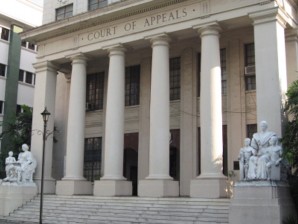Belying COA, DND says funds went for calamities
MANILA, Philippines—The Department of National Defense (DND) on Saturday denied a Commission on Audit (COA) report that said it had misused its disaster response funds for 2013.
Contrary to the COA findings, the DND said it released and used well its Quick Response Funds (QRF) for disaster preparedness, mitigation and operations in order to minimize losses and damage during disasters in 2013.
In its latest audit report for the DND, the COA said the Armed Forces of the Philippines spent the money intended for victims of natural disasters to pay for fuel and repairs to its offices.
It said that P843.5 million in disaster funds remained unliquidated since 2012.
The COA also found that a number of projects covered by the DND’s emergency fund had yet to be completed by the agencies under the department despite the release of the budget.
It said the DND spent only P6.65 million, or less than two percent of its QRF for 2013, for the purchase of relief supplies for the survivors of Supertyphoon “Yolanda” (international name Haiyan), which left more than 6,300 people dead and tens of thousands homeless in the Visayas in November that year.
Article continues after this advertisementThe Government Appropriations Act defines the QRF as a built-in budgetary allocation that represents predisaster or standby funds for agencies in order to immediately assist areas stricken by catastrophes and crises. Emergency funds allocated for the DND are used for mobilization and preparation.
Article continues after this advertisementAmong the implementing agencies that received QRF from the DND were the Philippine Army, Philippine Navy, Philippine Air Force, Office of Civil Defense (OCD), Philippine Military Academy, Armed Forces of the Philippines Finance Center and Veterans Memorial Medical Center.
Reacting to the COA findings, the DND maintained that the emergency fund was used for the purpose it was released to department.
It said the provision of fuel for all aircraft, ships, trucks and other equipment that were placed on standby and which were employed for this purpose was critical to mobilization during disasters.
“Transport to and from the calamity-affected areas is a primordial element of any emergency response,” the DND said in a statement.
“It is critical that relief goods, rescuers/responders, ancillary workers [who] deliver social services, repair materials, tents and communication equipment and so forth be transported to disaster affected areas immediately to overcome human suffering,” it said.
During Yolanda, the DND said, fuel allocated as war reserves were used until the job was completed. And the fuel needed to be replenished, it added.
The department said predisaster activities involved the organization, training and maintenance of response units, including the military, for actual disaster-response operations, hence funds were programmed and released for these purposes.
“It is essential that capacities and capabilities are enhanced particularly for the AFP, who are among the first responders in disaster-response operations, and the OCD, [which] administers the comprehensive national civil defense and disaster risk and reduction management program,” the DND said.
The COA said 2013 would have been the opportune time to use the QRF for the purpose it was released due to the calamities that occurred that year. Cynthia D. Balana
RELATED STORIES
